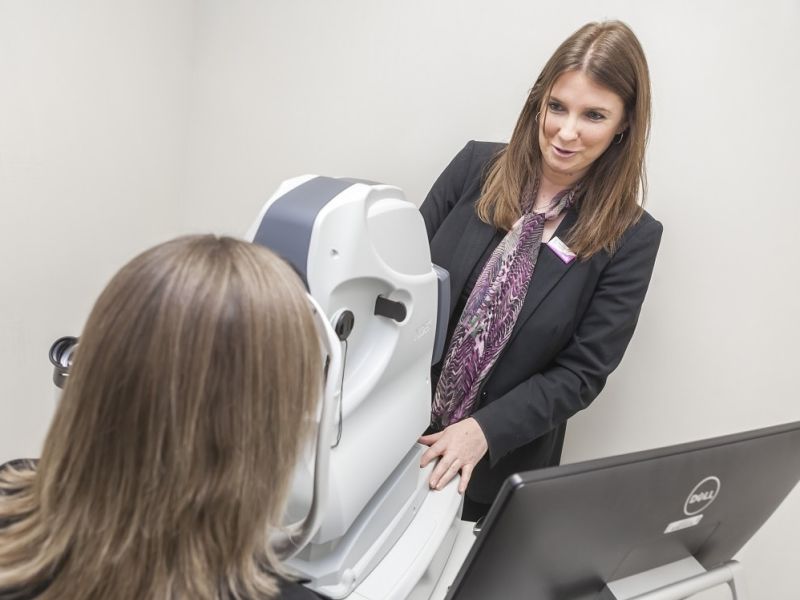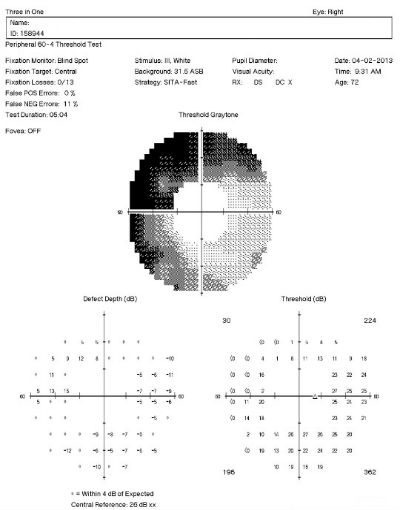

Light rays from OCT can reasonably penetrate mild ocular media opacities like cataract, posterior capsular opacification, vitreous hemorrhage, asteroid hyalosis and vitritis. This should always be checked with fundus video image of the scan. It is not possible to identify the laterality of the eye from the macular scans. Both PR junctions and retinal pigment epithelium (RPE) are represented by red lines, the former is thinner and the latter is thicker.

Normal retinal structures are labeled as: red for RNFL, and junction of inner and outer segments of photoreceptors (PR) green for plexiform layers, and blue/black for nuclear layers. Normal retinal structures are labeled as: red for RNFL (arrowhead) and junction of inner and outer segments of photoreceptors (PR) green for plexiform layers (magenta arrow), and blue/black for nuclear layers (blue arrow). Systemically, OCT is proving to be a helpful tool in substantiating early diagnosis in diseases like multiple sclerosis and drug induced retinopathies by detecting early changes in morphology of the retinal nerve fiber layer.Ĭolor codes: Red - High reflectivity (white arrow) black– low reflectivity (blue arrow) green - intermediate reflectivity (magenta arrow). OCT has revolutionized the sensitivity and specificity of diagnosis, follow up and response to treatment in almost all fields of clinical practice involving primary ocular pathologies and secondary ocular manifestations in systemic diseases like diabetes mellitus, hypertension, vascular and neurological diseases, thus benefitting non-ophthalmologists as well.
Abnormal oct eye test software#
The digitalization and advanced software has made it possible to store and retrieve huge patient data for patient services, clinical applications and academic research. Overall, OCT is an invaluable adjunct in the diagnosis and follow up of many diseases of both anterior and posterior segments of the eye, primarily or secondary to systemic diseases. The spatial resolution of as little as 3 microns or even less has allowed us to study tissues almost at a cellular level. OCT is based on the property of tissues to reflect and backscatter light involving low-coherence interferometry. OCT is a non-contact, topographic, biomicroscopic device that provides high resolution, cross-sectional digital images of live biological tissues in vivo and in real time. The concept of cross-sectional imaging revolutionalized the applicability of OCT in the medical profession. Optical Coherence Tomography (OCT) is a success story of scientific and technological co-operation between a physicist and a clinician.


 0 kommentar(er)
0 kommentar(er)
